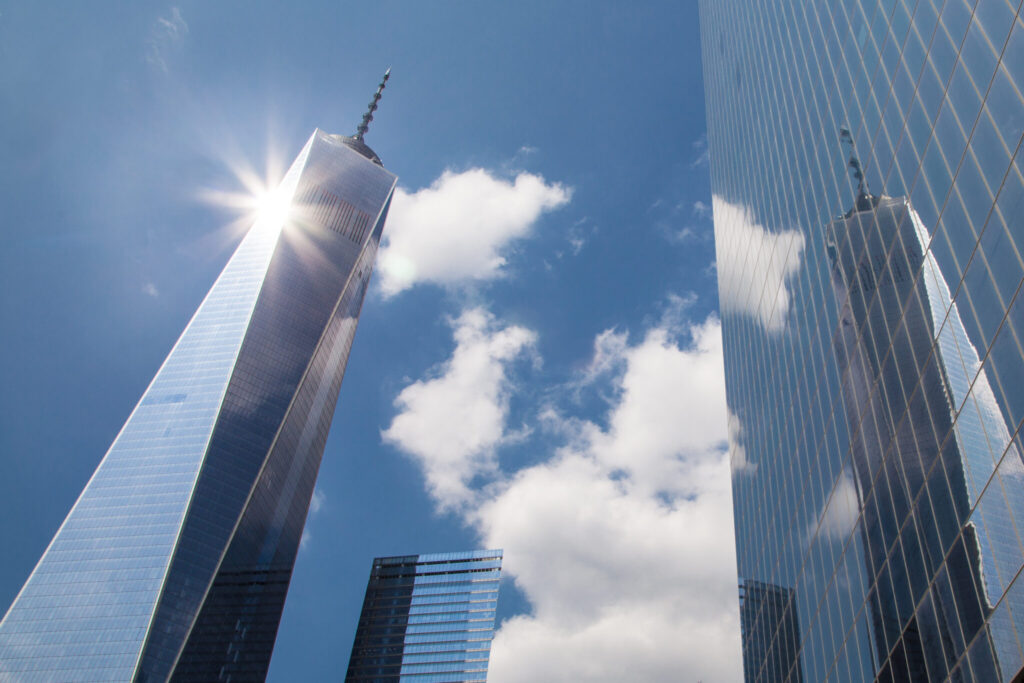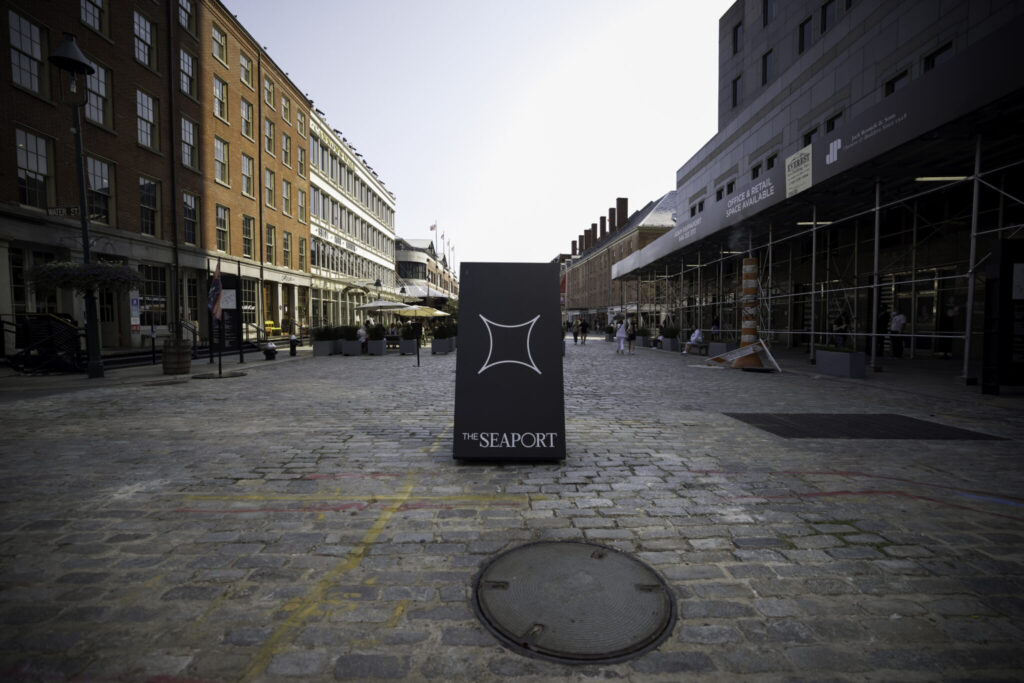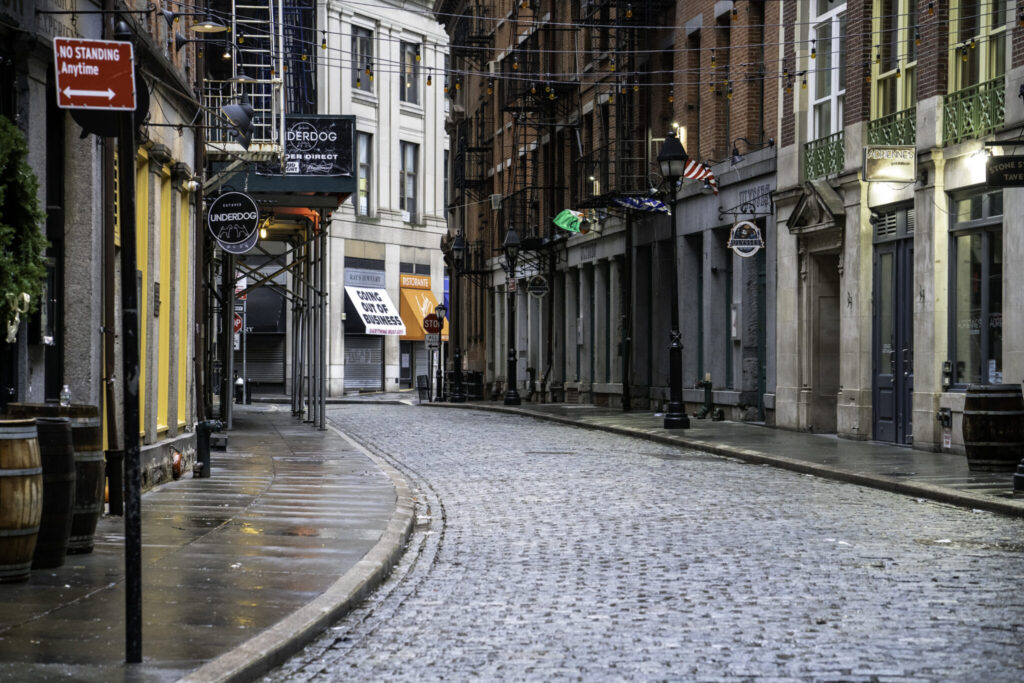SAMANTHA BANELLIS

Mayor Michael Bloomberg (2002 – 2013) used his branding of New York City as a “luxury city” to position wealthy residents and corporations as the remedy to the several crises that marked his administration – 9/11, Hurricane Sandy, and the 2008 mortgage foreclosure and financial crisis. We should call his strategy into question in light of the COVID-19 pandemic, in which many high-income residents left the city for bigger homes and companies sought to downsize their office spaces, allowing employees to work from anywhere. As these groups, who were once in-demand by the city’s leadership, have shown that they are not committed to New York City, and that they are willing to leave and spend their money elsewhere, city government should rethink its recovery strategy to ensure that low- and middle-income residents and small businesses get the support they need. Twenty years after the Bloomberg Administration’s first crisis, New York City government again faced a mass exodus of corporations and affluent residents from lower Manhattan during the COVID-19 pandemic, exposing the downsides of both current and previous recovery strategies. Lower Manhattan, an area that became increasingly expensive during Mayor Bloomberg’s tenure and after his administration, incentivized big businesses and real estate developers through a post-9/11 recovery strategy, demonstrating an obvious need for services and fiscal support.
Bloomberg and the Luxury City
The Bloomberg administration’s attempt to make New York a “luxury city” is evident in the plan for post-9/11 recovery. Mayor Bloomberg once said, “If we could get every billionaire around the world to move here, it would be a godsend that would create a much bigger income gap.” The Bloomberg administration launched a city-wide marketing campaign aimed at attracting top businesses from around the world. The administration focused the campaign on assets that would make New York competitive with other major cities, such as the high-quality labor pool of college educated professionals.[1] While the assets of New York City which they promoted were certainly a draw, other markets around the country could claim similar attributes, so the administration knew they had to develop additional branding to stand out. Thus, the Bloomberg administration birthed the brand of New York City as a luxury product. The administration leaned into the idea of the luxury city and then crafted policies which shaped and supported that narrative.[2]
The main focus of the Bloomberg Administration’s suite of policies was that New York City should cater to a specific type of well-educated urban professional. This required Mayor Bloomberg to embark on a city-wide development plan to rethink neighborhoods such as Williamsburg, Harlem, Downtown Brooklyn, and more to create a hybrid residential and recreational environment. Bloomberg facilitated development of luxury housing through zoning changes and tax incentives and emphasized developing parks and open space along waterfront areas in many of these new luxury neighborhoods.[3]
As the Bloomberg Administration focused on its target luxury market, it left other residents behind. Mayor Bloomberg’s policies centered around the well-educated, cosmopolitan elite in the city without taking into account large swaths of the city’s residents – those who were low-wage workers or middle-income professionals.[4]
By 2013, the final year that Mayor Bloomberg was in office, residential rents surged. Between 2005 and 2013, the NYU Furman Center found that rent increases were greater than the increases in income, with the median gross rent adjusted for inflation rising by 11 percent, and median household income only rising by 2 percent. Additionally, 54 percent of households in 2012 were rent burdened (paying 30 percent or more of their income towards rent), compared to 44 percent in 2000.
While the Bloomberg Administration increased the city’s housing stock, these units were not targeted towards low-income renters. The rental stock in New York City increased by less than 5 percent between 2002 and 2012, although only 26 percent of the units constructed since 2000 rented at a rate affordable to the median renter household, according to the NYU Furman Center. This data shows that while Mayor Bloomberg was creating an environment catering to his elite professional peers, the city was becoming unaffordable to many long-time residents. Those in power favored the elite, which was also evident in the city’s 9/11 recovery efforts.

Neoliberal 9/11 Recovery
Local officials engaged in 9/11 recovery efforts that prioritized businesses over residents. After World War II, many political leaders in the U.S. adopted neoliberal approaches to urban governance, promoting market-based ideals and inviting private business interests into revitalization efforts. As local leaders looked at how to rebuild the economy in both Lower Manhattan and New York City as a whole after 9/11, neoliberalism was a key driver in how the strategy panned out.
The terrorist attacks on lower Manhattan led to an economic downturn in New York. As sociologists Kevin Gotham and Miriam Greenberg note, the city lost around 40,000 jobs and 10 million square feet of office space immediately after the attack and an additional 300,000 New Yorkers lost their jobs due to street closures and economic decline during rescue and recovery efforts. This trend continued through 2003 when the number of unemployed residents in New York City reached 265,000, with the bulk of the lost jobs affecting low- to moderate-income workers who were employed in the airline, hotel, retail, securities, and clothing manufacturing industries, according to a 2003 report from the Fiscal Policy Institute.The plan for rebuilding lower Manhattan and New York’s economy did not acknowledge the impact on low-income workers. Business leaders and public-private partnerships, such as the New York City Partnership and the Downtown Alliance, quickly joined forces with local politicians to share their points of view on how the $12 billion in federal money that did not go to FEMA should be allocated. Their suggested recovery strategy heavily favored wealthy residents and multinational corporations.
The main source of inequities in distributing government funds came in the form of Community Development Block Grants and Liberty Bonds. Many influential public-private partnerships advocated for waivers in the distribution of these funds that allowed the money to go to real estate developers and large companies, without any stipulation that the funds go to projects for “public benefit.” For example, New York legislators allocated $2.4 billion for Business Recovery Grants, which they initially intended to distribute to small businesses. As Gotham and Greenburg’s analysis of recovery efforts highlights, due to lobbying from the Empire State Development Corporation and the Lower Manhattan Development Corporation, almost 40 percent of the funds went to large corporations, individual financial traders, and lawyers who made up only 15 percent of those affected, with the Bank of New York and American Express alone receiving 40 million and 25 million dollars in cash incentives, respectively.
Conversely, the Lower Manhattan Development Corporation did not give affordable housing and living wage jobs the same priority in redevelopment. City administrators approved less than $50 million for affordable housing by 2006; meanwhile, the Liberty Bonds program gave Mayor Bloomberg and Governor Pataki the authority to allocate $8 billion in tax-exempt activity bonds, which came with many waivers allowing them to spur the largest luxury-housing boom in recent city history. The New York City mayor and State governor were able to use these bonds for commercial development with no consideration of “public interest.” The bonds did not require the “80/20” regulation that would allocate 20 percent of the new units to be affordable housing, nor did the development process require any public comment period. The majority of these bonds went to just a few powerful developers: 40 percent were allocated to Larry Silverstein, owner of the World Trade center, while Goldman Sachs received the second largest allocation of bonds, amounting to $1.65 billion to finance a new 43-story, $2 billion headquarters. Together, this level of development led the population of Lower Manhattan to increase by 60 percent from 2001 to 2006 and the average income of the area to climb to the highest in the city. This trajectory of recovery in Lower Manhattan is significant, especially considering that prevailing wages for 60 percent of those who faced economic hardship due to lost jobs during this period of economic tumult were $11 per hour. Through the inequitable distribution of Liberty Bonds, Mayor Bloomberg and Governor Pataki initiated the unfettered growth of the real estate industry, and the wealthiest companies and residents in New York, while leaving behind those who needed relief the most.
The Vulnerability of the Luxury City in Light of COVID-19
Mayor Bloomberg spent three terms in office catering to the wealthy elite who now have a strong foothold in the city. With much of the 9/11 recovery benefiting the city’s wealthiest residents, New York City is much more expensive than it was when he took office in 2000. In the mind of the Bloomberg administration, high-income residents were the key to economic recovery in the early 2000s. However, the COVID-19 pandemic has exposed the weaknesses of this approach.
When the lockdown orders began to take effect in March 2020, many of the city’s wealthiest citizens abruptly left at the first signs of trouble. The New York Times estimates that approximately 5 percent of residents left the city between March 1 and May 1, 2020, and that anywhere from 12.9 percent to 18.6 percent of Manhattan’s population left during this time, with some zip codes in Lower Manhattan seeing an exodus of 30 to 40 percent of their residents. The neighborhoods with the wealthiest residents began to clear out first. An analysis from The New York Times details some of the economic effects this exodus, along with work-from-home policies for office workers, has had on Lower Manhattan: more than 350 retailers have closed, private sector jobs have decreased to 221,000, ridership at subway stations in the regions decreased by 82 percent, and 21 percent of Lower Manhattan’s office space is available for rent. Companies such as JP Morgan Chase and Advance Magazine Publishers (owner of Condé Nast) are trying to offload office space and withhold rent.
These trends call into question the neoliberal recovery strategy that we have come to accept. With companies shifting to remote work, retail spaces closing their doors, and wealthy residents fleeing in droves, was the strategy of appealing exclusively to these groups sustainable? The city never invested largely in low-wage workers twenty years ago, and were similarly disadvantaged in the early months of the COVID-19 crisis. The retail industry laid off 11,000 employees, leaving them to rely on the government for unemployment. The pandemic and years of unhelpful recovery strategies left many essential workers most vulnerable.
Along with the historic lack of investment in low-wage workers, the decline of tourism in Lower Manhattan also impacted the area. Tourism that the Lower Manhattan area relied on, and which had previously driven investments in attractions funded by taxpayers such as the Oculus, drastically declined during the pandemic. Revenue from the tourism industry decreased to $20.2 billion in 2020 from $80.3 billion in 2019, costing the city $1.2 billion in tax revenue. The wealthy residents that NYC spent two decades catering to were not helpful with filling the revenue gap. The high-income residents the city thought it could rely on left to spend their money elsewhere. Their departure, along with work-from-home models, led businesses in the lower Manhattan area to close and the subsequent loss of retail jobs.
New York politicians, such as former Governor Cuomo did not want to tap the wealthy residents who composed a profitable tax base. Governor Cuomo was strongly against raising taxes on the rich in the state, making the argument that raising their taxes would cause them to leave. New York City planning and policy for the past twenty years demonstrate that in times of crisis, the municipal government cannot rely upon these wealthy residents to support the local economy, fund city services, and support New Yorkers who need help most.

Next Steps
In light of an apparent exodus from Lower Manhattan during the COVID-19 pandemic, along with the uncertainty of the future of the office, it is time to rethink how we can better utilize the neighborhood to benefit long-time residents of New York. City policy and planning should serve long-time and low-income New Yorkers rather than cater to temporary wealthy residents (who have shown that they have no real stake in the city), the real estate industry, and corporate interests. With its high concentration of subway lines and other transportation options, walkable space, parks, and more, this neighborhood can better accommodate New Yorkers. While many major companies will be staying in the neighborhood, even with downsized office space, Lower Manhattan could become a vibrant gathering point and a hub for small business and the arts.
New York City is expecting $600 million in federal funds for small business recovery and has yet to spend about $450 million in state funds. Of concern in this plan is the fact that Empire State Development, one of the private-public partnership responsible for diverting 9/11 recovery funds to private capital investments, is responsible for distributing $600 million of the state’s funds to small businesses. New York City should prioritize distributing some of these funds to central business districts such as Lower Manhattan. Distributing funds to these hard-hit areas could encourage local companies to fill the empty office space and ensure that small restaurants and retailers which make the area desirable receive the funds they need. The city should avoid the same distribution mistakes made by the federal government which led establishments such as Shake Shack and Ruth’s Chris Steak House to get tens of millions of dollars of recovery relief early in the pandemic. New York City needs to invest in small businesses to ensure a diverse and thriving local economy. Between January 2020 and June 2021, small businesses with fewer than 100 employees decreased by 44.7 percent, proving the need for additional funds.
In addition to bringing new jobs and workers to the area, the transportation options and public space in Lower Manhattan make the neighborhood a convenient gathering point for residents from all areas of the city. The Ronald O. Perelman Performing Arts Center is set to open in 2023, solidifying the neighborhood as an arts destination. This past summer, the neighborhood also hosted several free Tribeca Film Festival screenings at venues such as The Battery, while Pier 17 has been hosting outdoor concerts. These arts and culture activities can be expanded and accessed more easily through increasing and rethinking of open streets. The neighborhood is already making use of open streets and outdoor dining on streets like Pearl Street. The Financial District Neighborhood Association proposed a slow streets plan that would expand pedestrian plazas, make the streets shared between cars and pedestrians, and provide greater foot traffic to support local businesses.
Finally, there is a potential to convert commercial buildings that are no longer in high demand to much-needed affordable housing for city residents. This proposal is lofty, as this type of conversion is costly, could take years, and funding may still be an issue in the future. Still, the City Council held a hearing to discuss a bill that would establish an Office-to-Affordable Housing Task force. The state also made $100 million available to convert distressed hotels into affordable housing. While these conversions are costly, they often cost less than building new housing from scratch. A push to convert underutilized space in this neighborhood would greatly help city residents. According to a NYU Furman Center report, in 2020, 24 percent of NYC renters were moderately rent burdened (paying 30 to 50 percent of their income on rent) and 26.2 percent were severely rent burdened (paying more than 50 percent of their income on rent), due in part to the neoliberal policies of the Bloomberg administration.
Rethinking this neighborhood in a way where affordable housing, economic opportunities, small businesses, and arts establishments all work together would have a positive impact on the local economy. Affordable housing would lead to a more stable population in the neighborhood compared to the high-income residents who left the city, and as affordable housing units typically have wait lists–meaning demand for them is high–the units would remain filled. When residents are not spending 30 to 50 percent or more of their income on rent, they will have more disposable income that they can spend in the local economy and at local establishments, further benefiting the economy of the neighborhood and the potential new businesses that could take root there.
While the Bloomberg administration’s post-9/11 recoveries made the city into the unaffordable place it is today, the COVID-19 pandemic presents the opportunity for a reset and a reprioritization of social and fiscal policy for the city. We have seen the same low-wage workers and New York City residents bear the brunt of crisis recovery through the years, and New York City should not neglect these groups as they did in the early 2000s. As city officials think through COVID-19 recovery, they should prioritize the needs of long-term and low-income residents rather than corporations who always threaten to leave and who employ a mobile workforce who may not be as invested in New York City as hybrid work becomes the norm.
Notes
[1] Julian Brash, Bloomberg’s New York: Class and Governance in the Luxury City (Athens: University of Georgia Press), 111.
[2] Ibid., 106-125.
[3] Ibid., 122.
[4] Ibid., 126-127.
Samantha Banellis is an Urban Policy and Leadership student. She currently works at a communication firm that specializes in nonprofit work and is interested in economic development.

